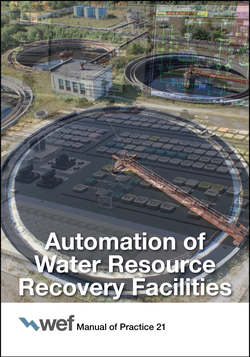Читать книгу Automation of Water Resource Recovery Facilities - Water Environment Federation - Страница 34
3.0 AUTOMATION COSTS
ОглавлениеAutomation equipment, including sensing instrumentation, control elements, controllers, software, and programming, typically adds at least 4 to 12% to the total cost of building a treatment facility. Project costs are site-specific and depend on the treatment processes involved and managers’ decisions about the tradeoffs between automation and labor. Once installed, an automation system has ongoing maintenance costs. Such costs should be considered early in the design phase because an automation system that is not maintained properly will eventually fail and fall into disuse.
It is worthwhile to note that many of the benefits identified in the previous section may only be achieved through the application of complex automation solutions with the associated costs. For example, tighter process control may require additional instrumentation, field devices, sophisticated software algorithms, and ongoing operations and maintenance support.
There have been studies that look at correlating the cost of SCADA systems to facility-production capacity (U.S. EPA, 1999). Although the data in these studies indicated a rough correlation, the wide deviation makes it difficult to develop a reasonable cost estimate without completing a detailed analysis.
The American Association of Cost Engineers (Christensen et al., 2011) has established five categories of estimates. Each category includes an expected level of detail and establishes goals for the probable accuracy of the estimates at each level. Many municipalities have their own established guidelines and expectations for the cost-estimate level of accuracy and these are typically tied to the phase of development of the project. The following sections provide several categories of costs to consider when developing an automation cost estimate.
